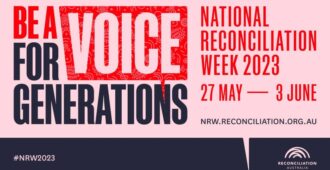
The Sax Institute contributes to high-impact research work right across the public health spectrum. As part of what will become a regular update of the Institute’s activities, below is an overview of interesting research findings in Aboriginal health and mental health that have emerged over recent months. We’ll be following up with updates in other fields in upcoming issues of our newsletter, Evidence Matters.

Aboriginal health research findings
Smoking
Smoking and mortality in Aboriginal and Torres Strait Islander people
Research using data from the Sax Institute’s 45 and Up Study found smoking causes around half of deaths in older Aboriginal and Torres Strait Islander people, a significantly higher figure than previous estimates. Quitting at any age has substantial benefits, and those who quit before the age of 45 have mortality risks similar to never-smokers.
Factors associated with non-smoking in urban Aboriginal teens
Research based on data from the Sax Institute’s SEARCH study looked at the factors associated with preventing regular smoking in Aboriginal teens. It found promoting good mental health and strengthening social connections may be protective against smoking, as those experiencing less social disruption were more likely to have never smoked. Smoking could also be an indicator of psychosocial conditions and a prompt for screening.
The association of asthma in Aboriginal teens with parental and carer smoking
This research based on data from the Sax Institute’s SEARCH study found that in a cohort of urban Aboriginal children, those who were exposed to pre-natal maternal smoking had a higher risk of asthma. Asthma rates declined with higher household income as well as with greater household size.
Child health and wellbeing
Factors contributing to the health and wellbeing of urban Aboriginal children
This qualitative research using the Sax Institute’s SEARCH study looked at the views of parents and carers on factors important to Aboriginal children’s health and wellbeing. Thirteen factors were identified, including loving family relationships, culturally competent healthcare, food security, active living, community services, breaking cycles of disadvantage, housing availability and affordability, and positive Aboriginal role models, among other factors.
The social determinants of otitis media in Aboriginal children
This systematic review from the Sax Institute’s SEARCH team found that housing-related issues were the most commonly reported social determinants of otitis media in Aboriginal children. The authors note a disconnect between drivers of the disease and the public health response, which overly focuses on biomedical rather than social issues.
Developmental risk among urban Aboriginal children
This research using data from the Sax Institute’s SEARCH study looked at developmental risk in urban Aboriginal children and factors associated with it. The authors found that 40% of a cohort of urban Aboriginal children aged 8 or below were at no or low developmental risk. Factors associated with risk included male sex, prior history of ear infection, having lived in four or more houses, living in foster care and having a carer with psychological distress. Community-driven programs for early detection and intervention are needed.
Mental health research findings
Suicide prevention
Suicide prevention in high-risk occupations
Commissioned by the NSW Ministry of Health, this Sax Institute Evidence Check reviewed over 60 studies to identify which occupations have higher rates of suicide and which programs have been effective in reducing risk. Concerning rates of suicide were found for farmers, veterinarians, doctors, nurses and midwives, among other occupations.
Research using data from the Sax Institute’s 45 and Up Study shows older people who are unable to work due to being sick, disabled or being a primary carer have double the risk of attempted suicide compared with those in work. Programs that facilitate continued employment or re-employment in older age could be of benefit.
This Sax Institute Evidence Check commissioned by the NSW Ministry of Health reviewed what is known about the risk of suicide in men and what interventions have been effective in reducing the risk. It found higher risk of suicidal ideation, suicide attempts and suicide deaths in all groups but few prevention interventions targeting them.
Mental health and the environment
The effect of urban green space on mental health
A JAMA study using data from the Sax Institute’s 45 and Up Study found people living in neighbourhoods with high levels of tree canopy had significantly lower odds of psychological distress.
Socially fragmented neighbourhoods and psychological distress
This research uses data from the Sax Institute’s 45 and Up Study to look at neighbourhood-level social fragmentation and psychological distress in immigrant populations. It found immigrants are 17% more likely to experience psychological distress compared with non-immigrants. Living in fragmented or socioeconomically disadvantaged neighbourhoods is associated with poorer mental health for immigrants and non-immigrants alike.
Mental health interventions
Mental wellbeing interventions
This Evidence Check reviews effective interventions for mental ill health prevention and promotion of mental wellbeing, including online support, social isolation and loneliness/social support, and for childhood trauma, housing and homelessness, employment and income inequality.
School-based prevention for student mental health and wellbeing
This Sax Institute Evidence Check looked at which mental health prevention and early intervention programs work best in the school setting. It identified 26 programs (of 74 reviewed) which could be implemented in Australian schools.
Mental health and chronic disease
Psychological distress and heart disease
People with psychological distress have higher rates of cardiovascular disease, although the causal relationship is unclear. This research surveying participants from the Sax Institute’s 45 and Up Study shows that the relationship is not directly causal, but is largely explained by sociodemographic and pre-existing physical health related factors.
The mental health of cancer survivors
This research using data from the Sax Institute’s 45 and Up Study showed that people who have survived cancer rated their quality of life almost as highly as those who had never had cancer and had similar rates of psychological distress.
Mental health and First Peoples
Parents’ and carers’ views on what is important for the health and wellbeing of Aboriginal children
This research, using data from the Sax Institute’s SEARCH study, looks at the health and wellbeing needs of Aboriginal children and highlights the need for affordable housing, food security, culturally appropriate healthcare and family and community connectedness.




